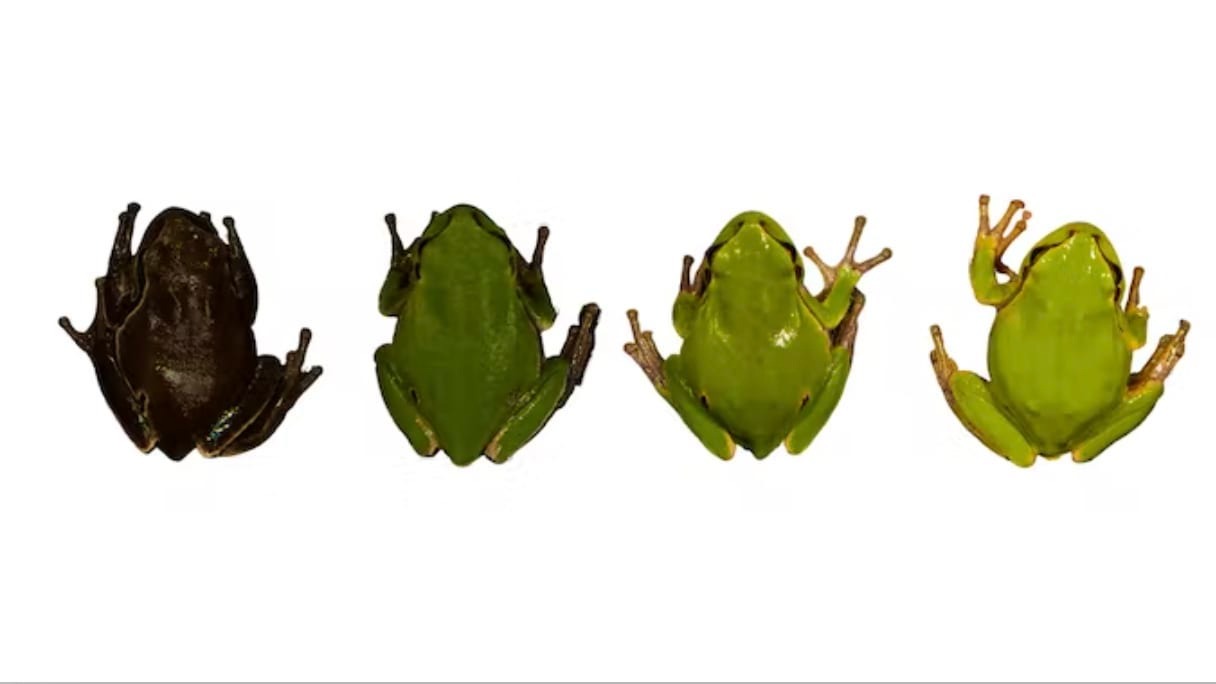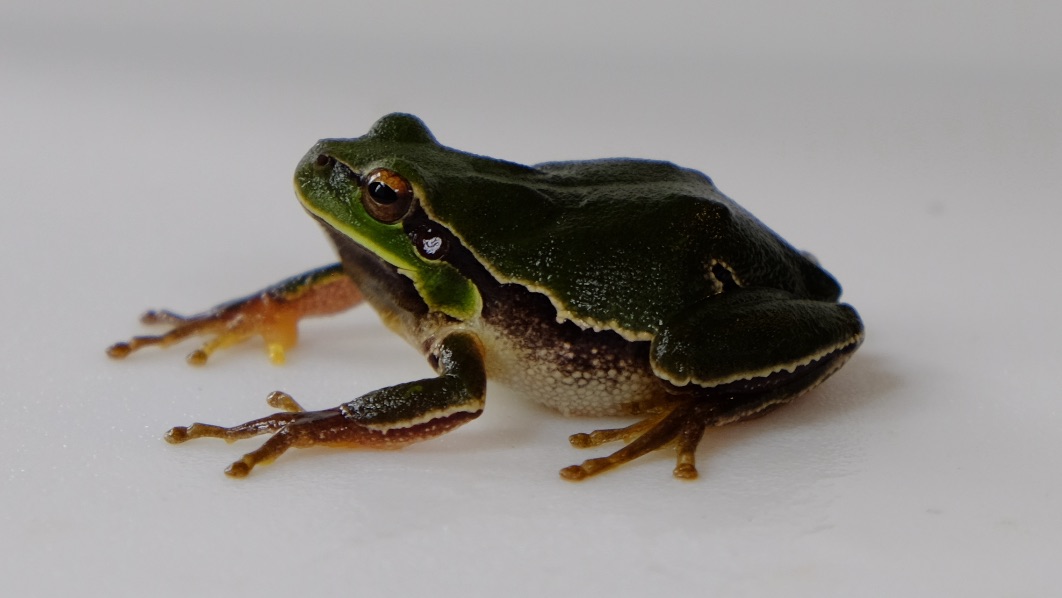Chernobyl radiation set off black frog surge while green frogs 'croaked.' Evolution explains why.
The 'protective role of pigmentation' is what's at play.

Near-black frogs far outnumber their highlighter-yellow fellows in Chernobyl's radiation-blasted ecosystems, in a direct example of "evolution in action," a new study shows. The study, published Aug. 29 in the journal Evolutionary Applications, found that eastern tree frogs (Hyla orientalis) with more skin-darkening melanin pigment were more likely to survive the 1986 nuclear accident in Ukraine than frogs with lighter skin, leading to populations today that are dominated by darker frogs.
"Radiation can damage the genetic material of living organisms and generate undesirable mutations," researchers wrote in a post on The Conversation about their research. "However, one of the most interesting research topics in Chernobyl is trying to detect if some species are actually adapting to live with radiation. As with other pollutants, radiation could be a very strong selective factor, favoring organisms with mechanisms that increase their survival in areas contaminated with radioactive substances."
On April 26, 1986, a reactor at the Chernobyl nuclear power plant in Ukraine exploded, spewing radioactive materials across an 18-mile (30 kilometers) radius.
"The Chernobyl accident released approximately 100 times the energy released by the nuclear bombs of Hiroshima and Nagasaki," Pablo Burraco, the study's lead author and a biologist with the Doñana Biological Station in Seville, Spain, told Live Science in an email.
Related: Frogs' skulls are more bizarre (and beautiful) than you ever imagined
Officials evacuated residents from the contaminated zone following the disaster and established a 1,040 square-mile (2,700 square kilometers) exclusion zone. In the decades since, the abandoned area has become a wildlife refuge. Burraco and his team wanted to understand how the nuclear meltdown drove evolution in the animals living there.
After studying more than 200 male frogs whose habitats were spread across 12 different breeding ponds throughout the radioactive contamination zone, researchers found that "on average, 44% were darker than those outside of Chernobyl," Burraco said. "We consider the most plausible explanation to [why] frogs within the Chernobyl Exclusion Zone [are changing color] is that the extremely high radiation levels at the moment of the accident selected for frogs with dark skin."
Get the world’s most fascinating discoveries delivered straight to your inbox.
Why dark skin? It turns out that high melanin levels in frogs’ skin shielded them from radiation.
"Melanin is known to protect against radiation because it can mechanically avoid the production of free radicals caused by the direct impact of the radioactive particles on cells," Burraco said. "Radiation can induce oxidative stress and damage essential structures for life such as the membrane of cells or even DNA."
Cells in the lighter frogs were bombarded with higher levels of damaging radiation, which killed them off at higher rates than their darker counterparts. After the blast, dark frogs had a higher likelihood of surviving, the study concluded.
Researchers also looked for potential negative effects of excess melanin on the post-Chernobyl dark frogs. They found that like in other species, including certain types of fungi, having darker pigmented skin didn't harm the overall health of the amphibians and actually helped ionize radiation, which prevents ionized molecules from getting into cells and damaging them.
"The production of melanin can be metabolically costly, this has been described, for example, in several bird species," Burraco said. "However, in frogs, the main melanin pigment is called eumelanin and its production seems not to incur in physiological costs."
Jennifer Nalewicki is former Live Science staff writer and Salt Lake City-based journalist whose work has been featured in The New York Times, Smithsonian Magazine, Scientific American, Popular Mechanics and more. She covers several science topics from planet Earth to paleontology and archaeology to health and culture. Prior to freelancing, Jennifer held an Editor role at Time Inc. Jennifer has a bachelor's degree in Journalism from The University of Texas at Austin.

